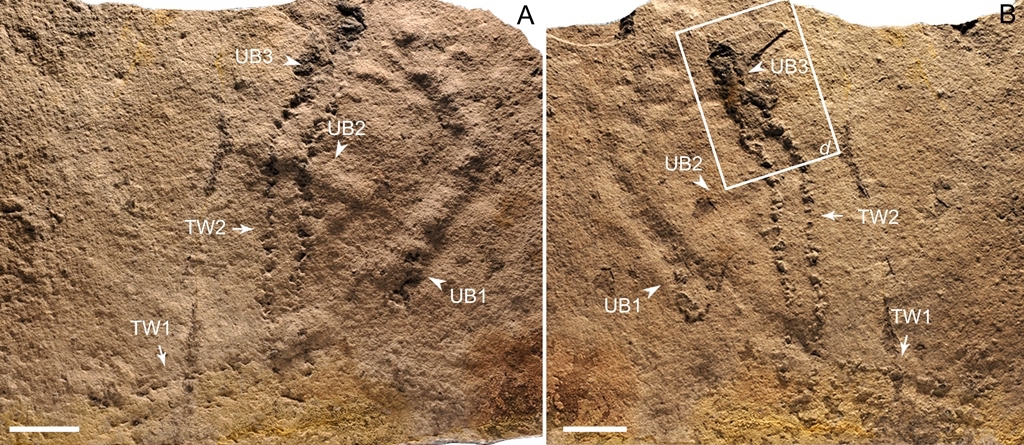World's Oldest Footprints Discovered on Ancient Seafloor

Neil Armstrong left the first footprint on the moon, on July 20, 1969. But what about Earth — when did animals first leave footprints here?
While we don't know exactly when animals first left tracks on our planet, the oldest footprints ever found were left between 551 million and 541 million years ago during the Ediacaran period, a new study finds. That's hundreds of millions of years before dinosaurs started roaming Earth, about 245 million years ago. The new findings suggest animals evolved primitive "arms" and "legs" earlier than previously thought.
The odd-looking prehistoric trackways show two rows of imprints that resemble a series of repeated footprints, the researchers said. The scientists found the trackways in the Dengying Formation, a site in the Yangtze Gorges area of southern China. [Image Gallery: 25 Amazing Ancient Beasts]
The trackways' characteristics indicate that a bilaterian animal — that is, a creature with bilateral symmetry that has a head at one end, a back end at the other, and a symmetrical right and left side — made the tracks. This sea-dwelling animal had paired appendages that raised its body above the ocean floor, the footprints left behind by its multiple feet suggest.
These footprints are located next to fossilized burrows. This means that the mystery animal might have periodically dug into the ocean floor's sediments and microbial matts, possibly to mine for oxygen and food, the researchers said.
Both the footprints and the borrows are known as "trace fossils," a term that refers to fossilized remnants that animals leave behind, such as fossilized poop, rather than fossils of the animals themselves. The newfound trace fossils are some of the earliest known evidence for animal appendages on record. Until now, it was thought that bilaterian animals, such as arthropods and annelid worms, first appeared during the Cambrian explosion, between 541 million and 510 million years ago, although some scientists suspected that these animals evolved earlier.
Now, the discovery of the trackways and burrows shows that animals with appendages lived during the Ediacaran period, the researchers said.
Sign up for the Live Science daily newsletter now
Get the world’s most fascinating discoveries delivered straight to your inbox.
The study was published online today (June 6) in the journal Science Advances.
Original article on Live Science.

Laura is the archaeology and Life's Little Mysteries editor at Live Science. She also reports on general science, including paleontology. Her work has appeared in The New York Times, Scholastic, Popular Science and Spectrum, a site on autism research. She has won multiple awards from the Society of Professional Journalists and the Washington Newspaper Publishers Association for her reporting at a weekly newspaper near Seattle. Laura holds a bachelor's degree in English literature and psychology from Washington University in St. Louis and a master's degree in science writing from NYU.









